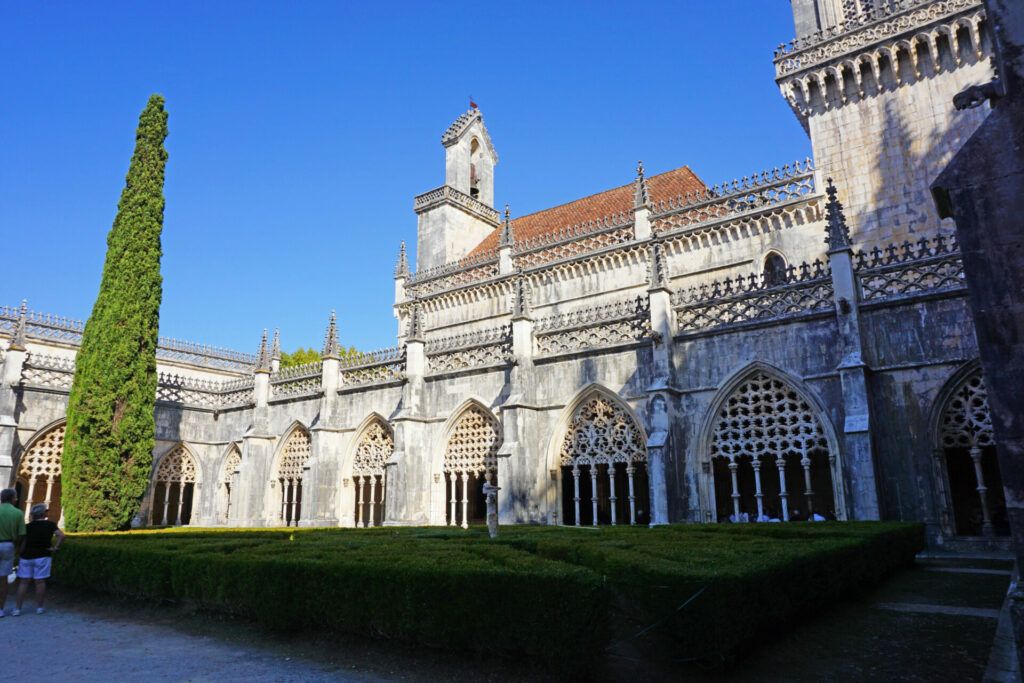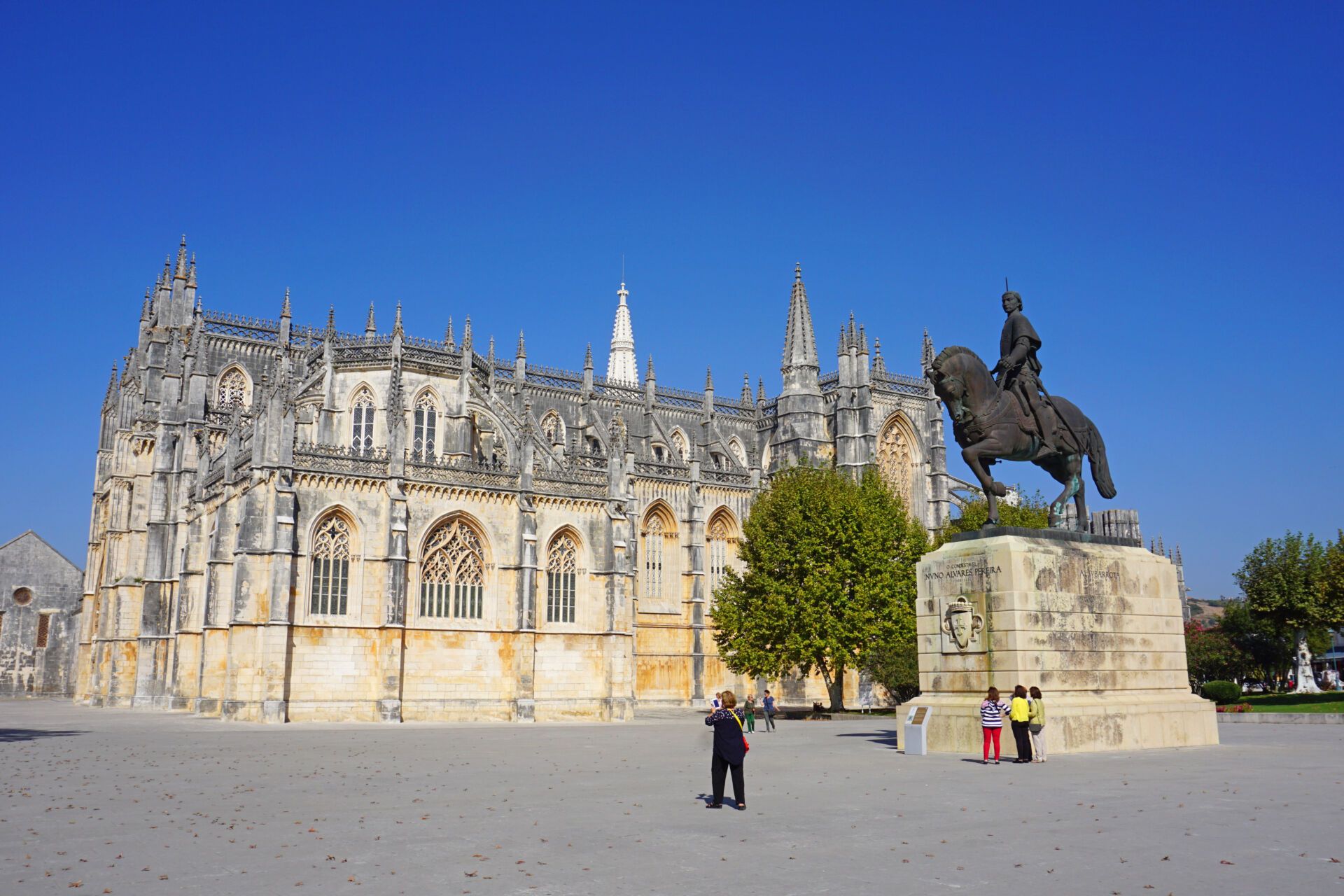Construction on the Mosteiro da Batalha (Batalha Monastery) began in 1386 and would only finish in 1563. But there’s something to be said about the craftsmanship that went into it, because it’s still standing today! Visitors from around the world make their way to Batalha to explore this UNESCO World Heritage site in person. Without wanting to go into a long history and architecture lesson in this post about the Batalha Monastery, I wanted to give my readers some fun facts to get them excited about and interested in visiting this famous Portuguese monument.
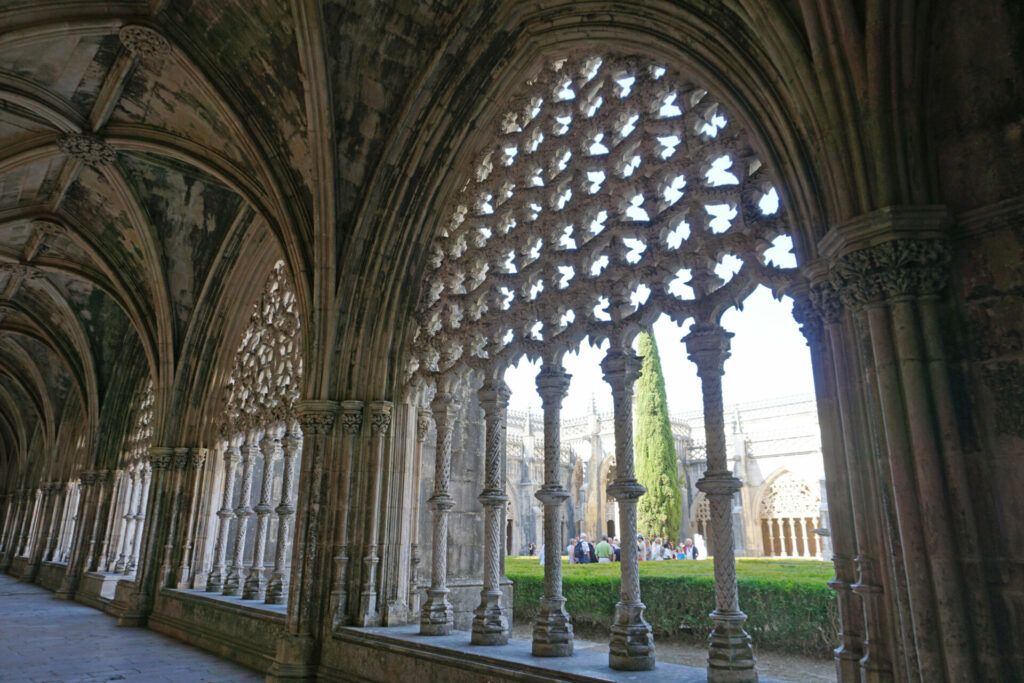
You’re welcomed by a Saint
Visitors to the monastery are greeted by a statue of Nuno Álvares Pereira, known in Portugal as “o Santo Condestável”. Pereira was a 14th century military genius that won all the battles he fought, most notably against the Kingdom of Castile, despite inferior numbers of troops. It was said his name was feared by the enemy. Having led a pious life, he was eventually canonized as a saint in 2009 by Pope Benedict XVI.
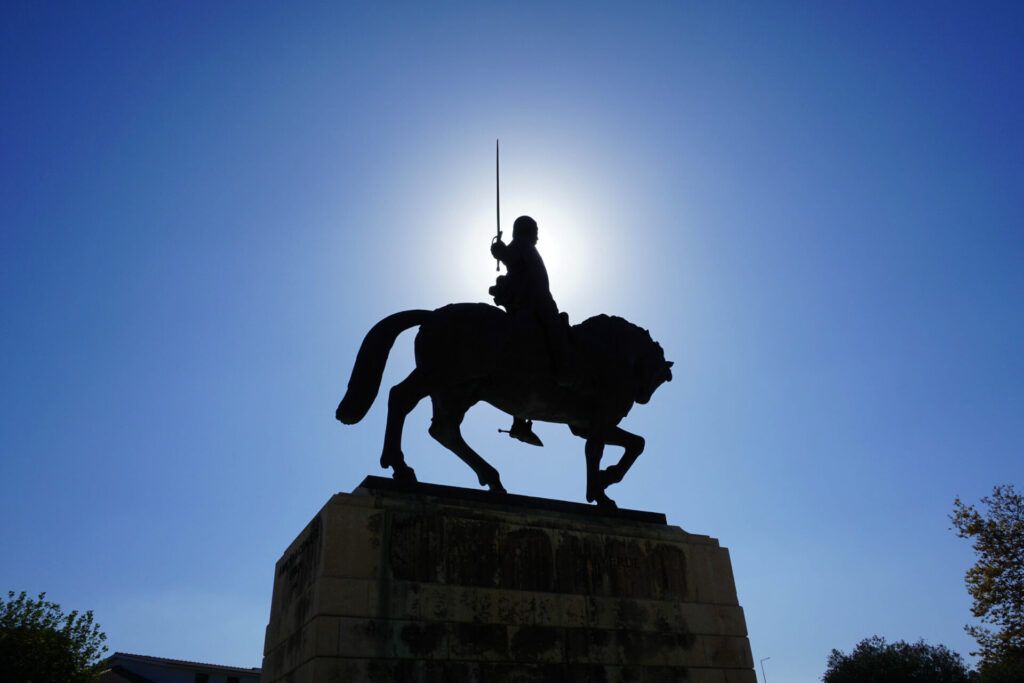
A Battle Full of Consequences
Batalha, the town in which the Monastery was built, literally means “battle”. It was named after one of the most (perhaps the most?) famous battle in Portuguese history, the Battle of Aljubarrota, against the Kingdom of Castile in 1385. The consequences of the Battle of Aljubarrota are diverse. Diplomatically, it reinforced the Anglo-Portuguese Alliance (the oldest existing alliance in the world). Militarily, it developed tactics that allowed foot soldiers to defeat a powerful cavalry. Politically, it ended the dispute between the two kingdoms, which guaranteed Portugal’s independence as a kingdom. Finally, it also brought into power King João I, the first Portuguese king in a new dynasty: the House of Avis. It was the House of Avis that was responsible for Portugal’s Discoveries and its prominence as a world power.
The Mosteiro da Batalha was built as a thank you to the Virgin Mary for Portugal’s victory at the Battle of Aljubarrota.
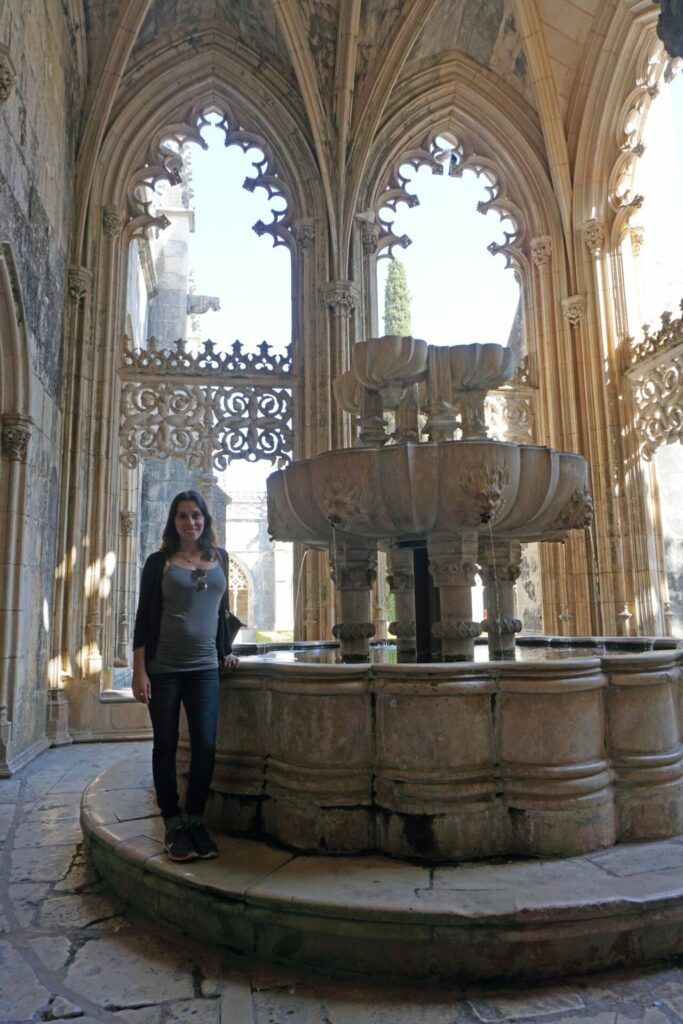
Gothic Architecture meets Royal Tombs
When entering the Mosteiro da Batalha, you come into a large, quite bare church with incredibly high ceilings. This is the main church. The architecture of the church – as well as most of the monastery – is in the gothic style. I loved being able to catch the colors of the stained glass against the simplicity of the columns and walls of interior of the church.
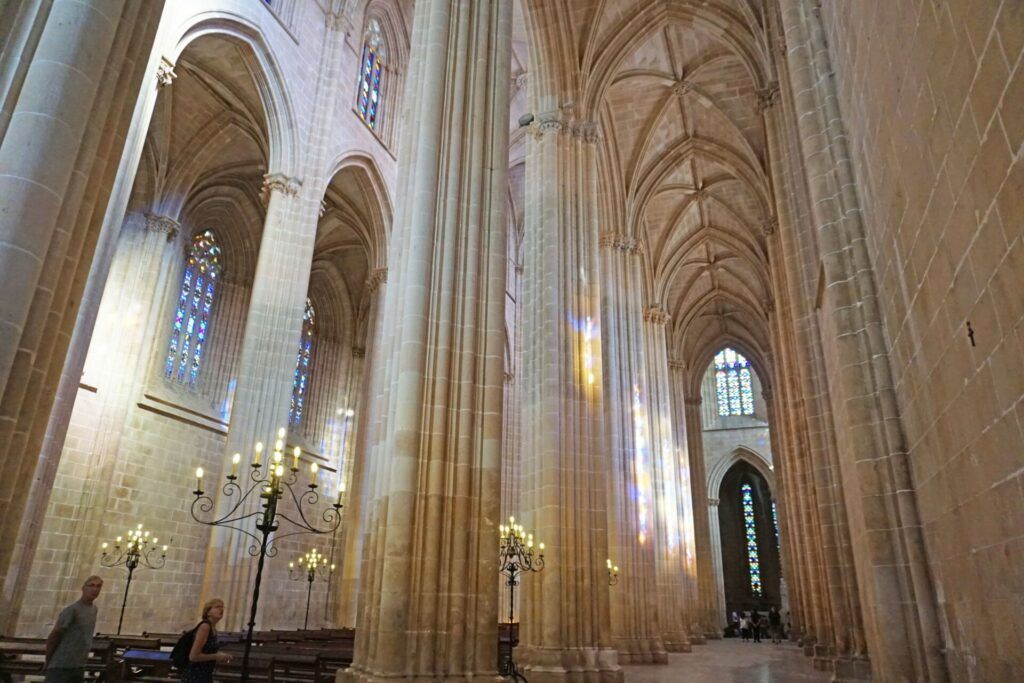
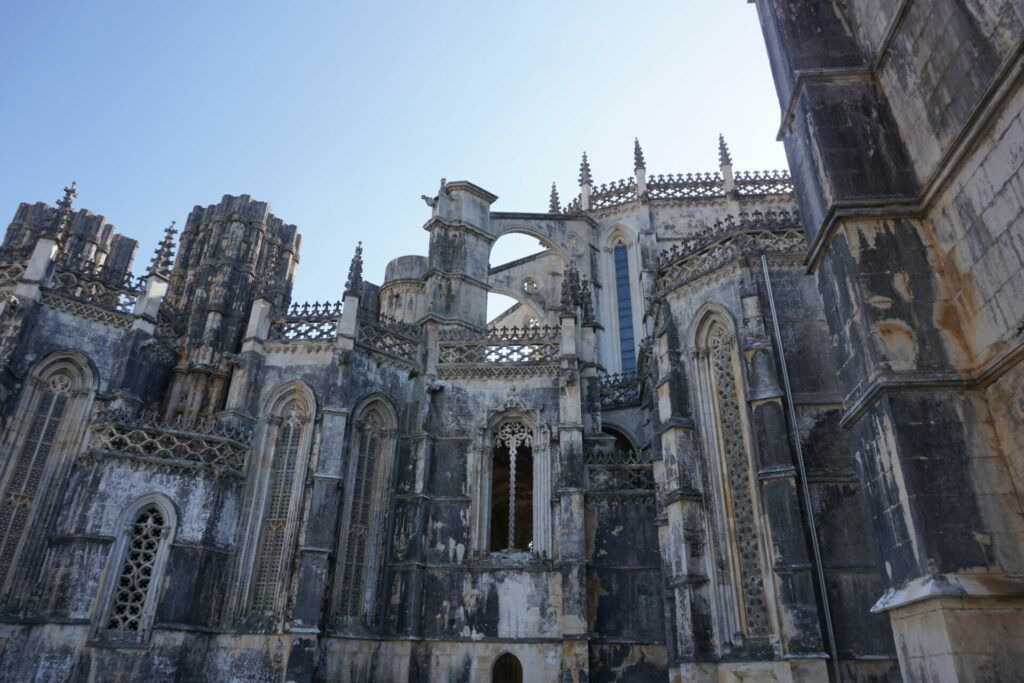
The room adjacent to the church, known as the Capela do Fundador, you will find the tombs of various members of the Portuguese royal family: João I, Filipa de Lencastre (Philippa of Lancaster), infante D. Henrique (Prince Henry the Navigator), infante D. João (John, Constable of Portugal), D. Isabel, D. Fernando, D. Afonso V, D. João II, as well as the Unknown Soldier. You will also see more incredible stained glass work, and detailed stone carvings along the walls and ceiling.
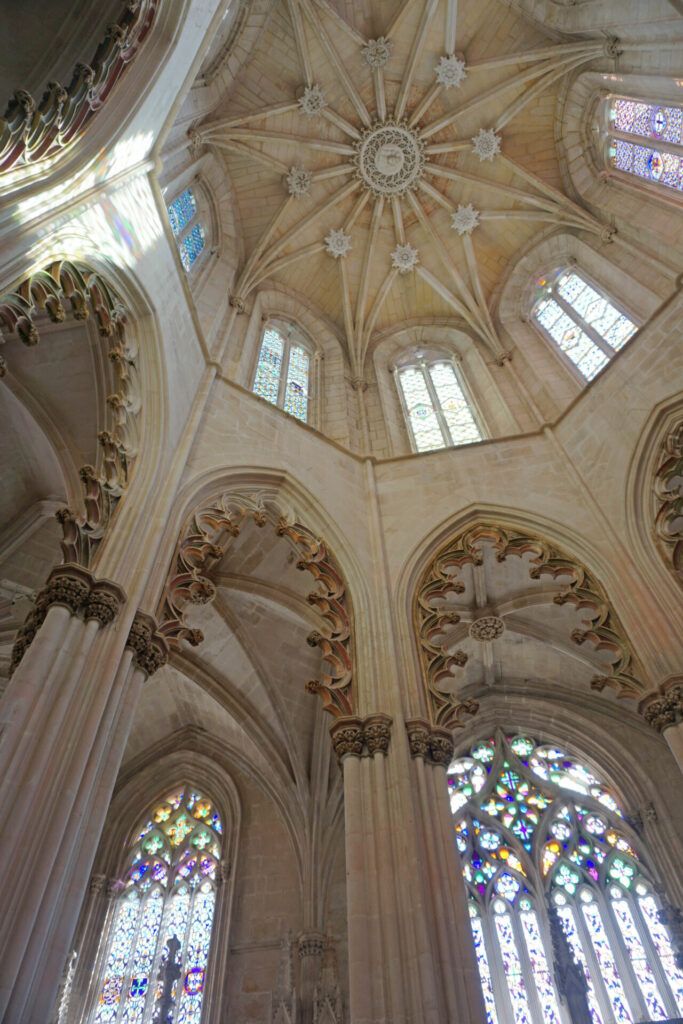
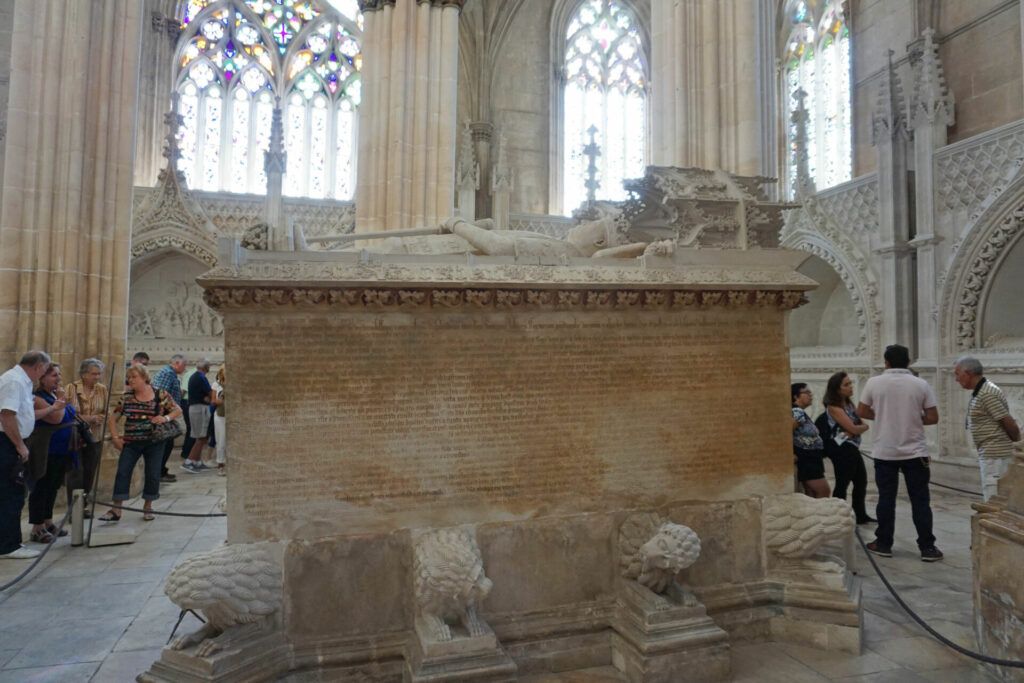
Imperfect Chapels
You will find one very curious aspect of the monastery at the very end of your visit. After exiting the main building, you’ll be directed around the corner to the Capelas Imperfeitas, the “imperfect chapels”. Building on this part of the monastery began in 1434 on the orders of King Duarte I. However, after the death of the king in 1438, construction only resumed in the early 16th century under King Manuel I, and the final touches were added in 1533… and yet, the seven chapels get their name from being incomplete: they have no roofs or ceilings! But for me, what really impressed me was the fine detailing on the stonework. It was absolutely stunning!
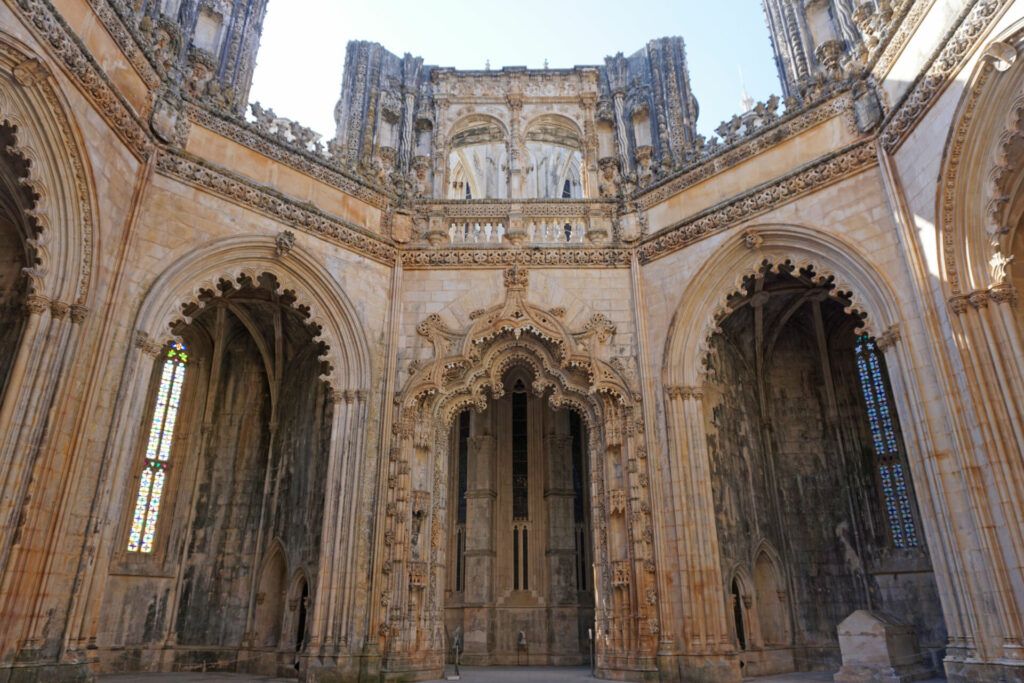
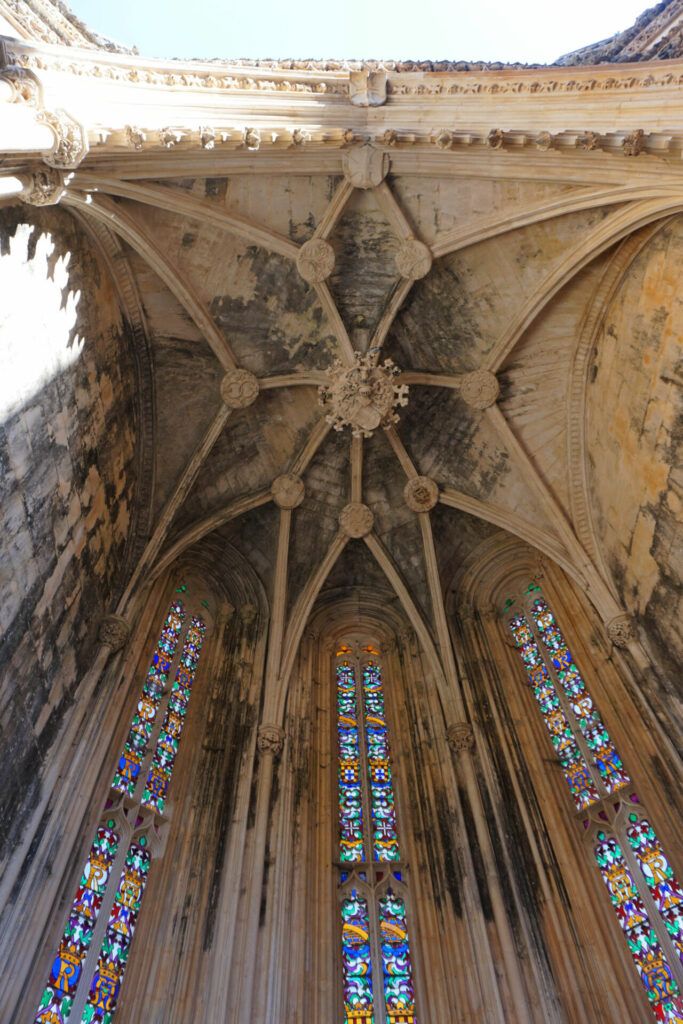
Another fun fact: it was only in the 1940s that the tombs of King Duarte and Queen Leonor, his wife, were placed side by side in this part of the monastery.
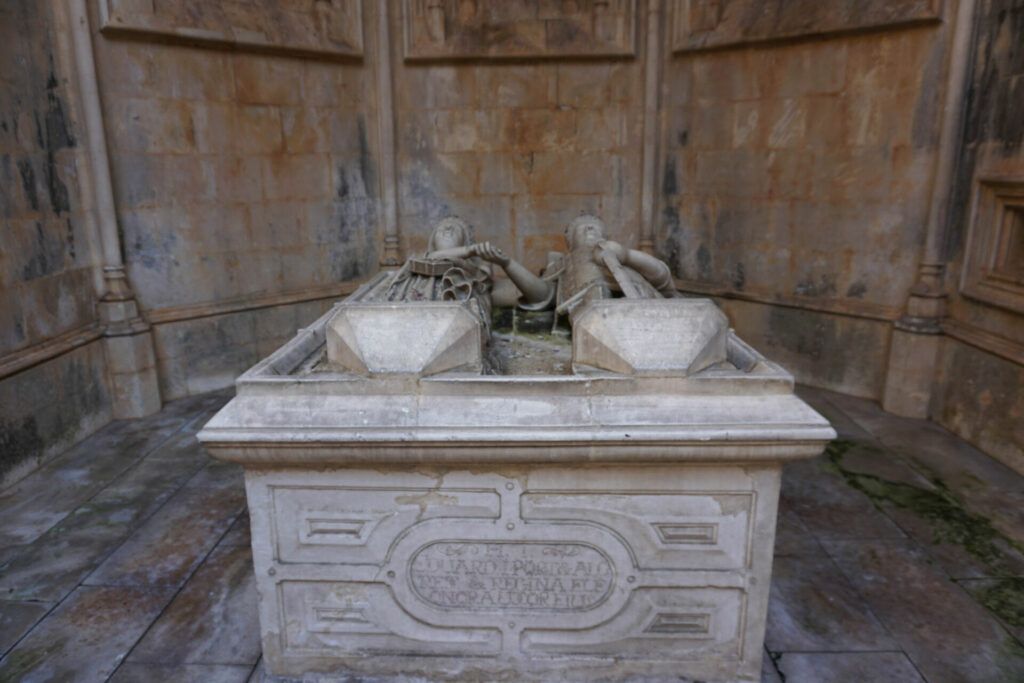
Naturally, there’s a lot more to the Mosteiro da Batalha than what I’ve written here. My tips for visiting are to make sure you pay the very affordable entrance fee to walk around the cloisters and the different rooms, and to take in all the fine detailing of the architecture: from the gorgeous stained glass windows to the lace-like stonework I keep coming back to. And above all, remember that there are nearly 650 years worth of history here: don’t rush it!
